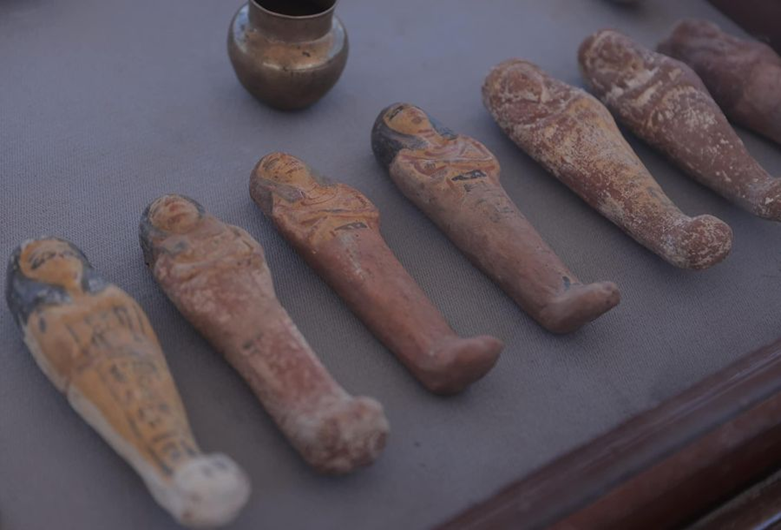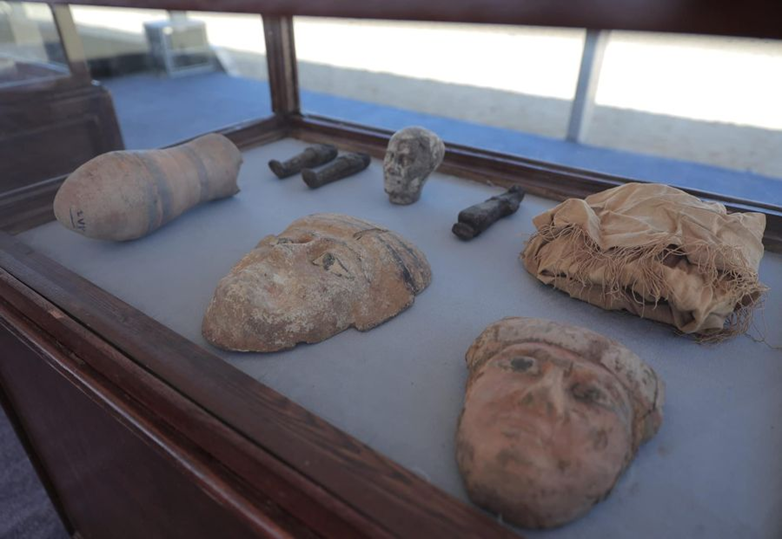Discovery of a 3,400-year-old Egyptian cemetery with precious sarcophagi

The sarcophagus of the daughter of a high priest - Photo credit: Ministry of Tourism and Antiquities
Archaeologists have discovered a cemetery more than three millennia old. It dates from the pharaonic monarchy of ancient Egypt. Precious sarcophagi, including that of the daughter of a high priest, were found.
In Egypt, archaeological discoveries follow one another. After discovering new pieces in the pyramid of Sahure, archaeologists have found a cemetery of the pharaonic monarchy which therefore dates from ancient Egypt. Located in the Al-Ghuraifa archaeological excavation area south of Cairo, this Egyptian cemetery is approximately 3,400 years old. The Egyptian Ministry of Tourism and Antiquities shared more information about this discovery as well as some photos of the most valuable objects found.

The Egyptian cemetery discovered during archaeological excavations contains around a hundred interesting objects from the Pharaonic monarchy. The most surprising of these is probably the colorful sarcophagus which belongs to the daughter of a high priest. The press release from the Egyptian Ministry of Tourism and Antiquities reveals that several wooden coffins were exhumed. Some still contain mummies in good condition.
This Egyptian cemetery contained a colorful coffin belonging to the daughter of a high priest
Archaeologists have been trying to find traces of this cemetery since 2017, but it has remained mysterious until now. “Excavations of the necropolis of Tuna El-Gebel, five kilometers south of Al-Ghuraifa, had revealed a cemetery of sacred animals and high-ranking statesmen of the Ptolemaic kingdom. But the New Kingdom cemetery remained unidentified,” explains Egyptologist Maysara Abdullah to the media Asharq Al-Awsat.

Dating from the time of the New Kingdom, around 1580-1077 BC. BC, the cemetery was reserved for high-ranking officials, state priests and rulers of ancient Egypt. This explains why the burial site accommodates many ornaments and amulets. The engravings of a colorful wooden coffin confirm that it belongs to “Tadi Essah”, that is to say the daughter of a high priest.
Additionally, archaeologists also discovered canopic jars next to the sarcophagus of the high priest's daughter. These vessels were used to store organs such as the liver, stomach, intestines and lungs which were removed from the body of the deceased at the time of mummification.

A roll of papyrus approximately 15 meters long discovered in this cemetery
A “complete collection of Oushebti statuettes” was also found near the coffin. These are small statues which represent funeral servants. They were used to answer the call of Osiris in the afterlife and to replace the dead in work in the fields. The funerary statuettes therefore depended on the social status of the deceased. As Dr Maysara Abdullah points out, the cemetery did not appear on old maps. Therefore, “no one expected to find valuable antiquities there”.
The Egyptian Ministry of Tourism and Antiquities also mentions another important discovery: that of a papyrus scroll approximately 13-15 meters long. In a good state of preservation, this papyrus includes an extract from the Book of the Dead. It will also be exhibited at the Grand Egyptian Museum. Still under construction, it is expected to open its doors by February 2023. It is located near the pyramids of Giza.
Source: Egyptian Ministry of Tourism and Antiquities

